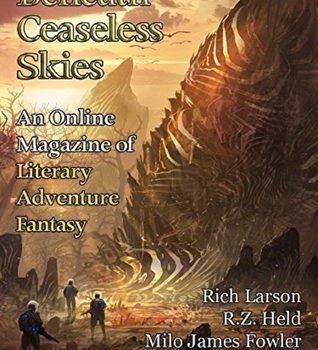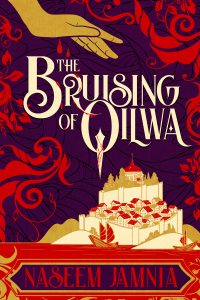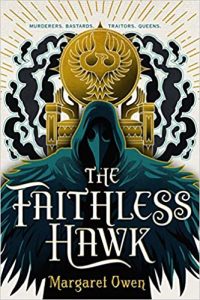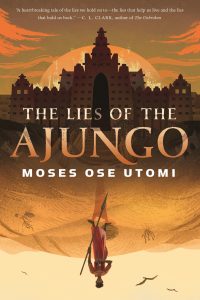Rich Horton Reviews Short Fiction: BCS, Lightspeed, Clarkesworld, Galaxy’s Edge, Kaleidotrope, and Apex
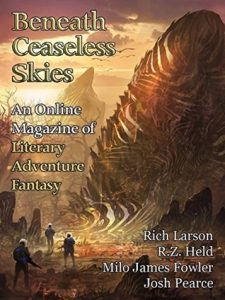 Beneath Ceaseless Skies, 2/1/18, 2/15/18, 3/1/18
Beneath Ceaseless Skies, 2/1/18, 2/15/18, 3/1/18
Lightspeed 2/18, 3/18
Clarkesworld 1/18, 2/18
Galaxy’s Edge 1/18
Kaleidotrope Winter ’18
Apex 2/18
February is Science-Fantasy Month at Beneath Ceaseless Skies, one of my favorite times! And as a bonus, this year it extends to the first day in March, so there are three issues of stories that mix SF and fantasy (often by describing SFnal situations in the language of fantasy.) My favorite from the first issue was “The Starship and the Temple Cat“, by Yoon Ha Lee, which really does mix out-and-out fantasy with SF (unlike Lee’s novels, which I read as being pure SF in a milieu describable to us only in a way that seems like fantasy). The cat is a ghost, in its spectral sense the only survivor of a space station destroyed by a galactic warlord’s forces. The starship is one of the fleet that destroyed the space station, and it has returned out of something like guilt after the death of its captain. And somehow the two meet, and through poetry and music, find a way to resist the warlord’s forces.
The 2/15 issue had a couple of intriguing pieces. Rich Larson‘s “Penitents” portrays a wholly ruined future Earth in which the more privileged live underground. Mara is one of those, and she’s come to the surface with the help of the wily Scout, to try to rescue her friend Io from the spooky alien creatures who have captured her: it seems these aliens attach to humans they find on the surface, take over their minds, and send them on forced marches. But Scout knows how alluring the attraction of these aliens is – and Mara eventually learns just why, which gives the story (and its title) its moral point. Josh Pearce‘s “Such Were the Faces of the Living Creatures” is the most effectively strange of all these stories. It’s set in a wholly chemically corrupted future in which children are conceived with the help of a “mater baster”, and are usually genetically malformed. The protagonist sets out with one of their diseased children to find a cure for her, a journey which serves as sort of a travelogue and, in the end, suggests a hope for a kind of transcendence, though within a cynical milieu.
From March 1, there is “The Emotionless, in Love“, a sequel of sorts to Jason Sanford‘s excellent 2016 story “Blood Grains Speak Through Memories”, set in a future in which AI-controlled “grains” enforce strict environmental rules on the humans they still tolerate, using human “anchors” as their enforcers for specific domains. Colton has had his grains burned out, and as a result can’t feel emotion. He has joined a traveling caravan, helping them with his limited ability to understand the grains. They have reached a domain which is ruled by an apparently mad anchor named Sri Sa, who offers Colton a way to regain his emotions in exchange for his group’s help…. The story turns in part on the true history of the establishment of the grains’ control, and on Sri Sa’s real and somewhat sinister plans. It’s interesting work, though not, I thought, quite as successful as its predecessor. Sarah Pinsker‘s “Do As I Do, Sing As I Sing” is pretty solid work as well, set on a world where “cropsingers” are required to sing to the crops to encourage them to grow properly. The narrator is to become the newest cropsinger for her community – a difficult and lonely job. Her brother rebels, and leaves, only to return with what he hopes are mechanical approaches to the problem. The story is at once a fine look at its main characters, and a worthwhile and not insistent meditation on both the difficulty of crude efforts to replace traditionally effective methods (such as this story’s cropsinging), and on the somewhat paradoxical resistance to changes that really might improve peoples’ lives, if disruptively.
Lightspeed’s February issue includes a fine and pointed fantasy by Rahul Kanakia, “A Coward’s Death“, about an all-powerful Emperor conscripting the first sons of his subjects to work on a massive statue. The moral is simple – his rule is unjust, but resistance, as they say, is futile. Nonetheless, one young man in the narrator’s village resists. The tale is lightly told, but mordant and effective.
In March Bryan Camp‘s “The Independence Path” is a solid and effecting, grounded piece of extrapolation, about an android boy and his desire for independence from his parents, whom he loves. He just wants to be his own person. Just like humans, of course! This story nicely marries believable technological and social extrapolation – and has a real character at its center.
Clarkesworld opens the year with an issue with three stories (of five, and that’s not counting Grenada-native Tobias S. Buckell!) from outside the traditional SF Anglosphere. I liked two of them a lot: Bo Balder‘s “A Cigarette Burn in Your Memory” is very strange, about a woman who takes inquiries about missing persons. Nothing odd there, but we soon learn that all sorts of things are missing, at least in peoples’ memories, including, perhaps, hers. It’s truly, effectively mysterious and moving. Bao Shu‘s “The Lighthouse Girl” is a clever story about a young girl whose mother is dead, but there is a mystery: why is her father evasive about her past? And why is her mother’s tombstone among graves from 40 years in the past? And what of her English teacher who thinks she resembles a childhood friend? Sinister possibilities arise – but the real answer is more SFnally interesting. Tobias S. Buckell‘s “A World to Die For” is a parallel worlds tale, opening in an environmentally collapsed future, a milieu reminding me of Mad Max. The gang Che runs with is stopped by another gang that wants a trade – Che for some solar panels. That seems strange and pretty scary, but things get stranger when she meets a man who says she’s been rescued from an attempt on her life, and stranger still when she meets herself, and realizes she’s rattling through a variety of parallel worlds, in wildly varying states of environmental health. The story drives – perhaps a bit too didactically – towards a morally convicted resolution.
From the February Clarkesworld I enjoyed “Obliteration“, another of Robert Reed‘s almost parable-like examinations of the effects of a technology, in this case a memory backup that allows anyone to replay any event of their life in detail. Kleave is exploring a simulated Mars and tries to replay something for his girlfriend and he can’t – his memory backup, and its backups, have been corrupted. This sends him on a path involving not just attempts to restore his lost memory, but to live without it (among, for example, a group that rejects the tech entirely). All this serves nicely as an illustration of this particular bit of speculation, and as a (slightly pat) moral look at its unexamined consequences. Nice if not overwhelming. More interesting, I thought, was Carolyn Ives Gilman‘s “Umbernight“, set within a struggling colony on a world subject to periodic bursts of radiation from its primary’s UV-emitting companion. Michiko is perhaps the only colony member interested in exploring their world, so she is forced into leading a dangerous expedition to recover the latest cargo drop from Earth, which will arrive just before the next predicted “umbernight”, when their planet will be awash in dangerous radiation. The expedition is predictably a disaster, especially when umbernight comes a bit early, and the members learn, the hardest way, that their planet changes in quite amazing ways in true umbernight. It’s pretty neat stuff, really, set against its protagonist’s justly cynical attitude.
I haven’t mentioned Galaxy’s Edge in a while. The magazine remains worth checking out, even if it hasn’t published any truly exceptional stories quite yet. It’s nicely produced, though, and features plenty of nice work, and lots of new writers. My favorite story for January is by veteran writer Nick DiChario, whose “Of Love and Olives” tells of an olive-farming couple in Italy, and a young man they find in a block of ice washed ashore. The man seems a miraculously survived soldier from WWI, and before long the wife is quite inappropriately attracted to him. The resolution is a bit bittersweet, but pragmatic and grounded.
Kaleidotrope for Winter has another quite amusing tale of a certain magical street, and a shop not far from “The Ouroboros Bakery”, Octavia Cade‘s previous story for them. The shop in “The Temporary Suicides of Goldfish” is run by the Lady of Scales, who will turn you into a goldfish for a pretty fair price, if you need to escape the world for a time. And the narrator, having picked the pocket of the wrong man, does need to get away. The story lets us learn as we go along how this magic works, and how and when one becomes human again, and also, incidentally, reveals a little twist about the relationship of the narrator, her girlfriend, and the girlfriend’s grandmother.
I also liked “A Slip in the Slice“, by Heather Morris, which sets up an intriguing notion: timeslices, where people share the same space but in different times (sort of), maybe a bit like Philip José Farmer’s Dayworld or Hao Jingfang’s “Folding Beijing”, but not exactly. Gwen wakes up one morning and realizes Paul – her “slicemate” or whatever – is stuck between slices or something. The tech doesn’t matter – the story works its way effectively to an unforced point about Gwen’s isolation.
In the February issue of Apex, I found Alix E. Harrow‘s “A Witch’s Guide to Escape: A Practical Compendium of Portal Fantasies” pretty special. It’s told by a librarian (“There have only ever been two kinds of librarians in the history of the world: the prudish, bitter ones with lipstick running into the cracks around their lips who believe the books are their personal property and patrons are dangerous delinquents come to steal them; and witches” – no prizes for guessing which category our narrator fits), as she encounters a teenaged boy who becomes obsessed with a particular, pretty bad fantasy novel. The boy is obviously in a difficult family situation and perhaps escape is what he needs. Witches know ways to escape, but that’s against the rules, and librarians are rule followers. The story is at the same time a bit cute, almost arch, and yet grounded and quite moving. It’s one of those stories that by the end really sold me, so that I liked it much more than I at first expected.
Recommended Stories
“A Cigarette Burn in Your Memory”, Bo Balder (Clarkesworld 1/18)
“The Temporary Suicides of Goldfish”, Octavia Cade (Kaleidotrope Winter ’18)
“The Independence Path”, Bryan Camp (Lightspeed 3/18)
“Umbernight”, Carolyn Ives Gilman (Clarkesworld 2/18)
“A Witch’s Guide to Escape: A Practical Compendium of Portal Fantasies”, Alix E. Harrow (Apex 2/18)
“The Coward’s Path”, Rahul Kanakia (Lightspeed 2/18)
“The Starship and the Temple Cat”, Yoon Ha Lee (Beneath Ceaseless Skies 2/1/18)
“A Slip in the Slice”, Heather Morris (Kaleidotrope Winter ’18)
“Such Were the Faces of the Living Creatures”, Josh Pearce (Beneath Ceaseless Skies 2/15/18)
“Do As I Do, Sing As I Sing”, Sarah Pinsker (Beneath Ceaseless Skies 3/1/18)
“Obliteration”, Robert Reed (Clarkesworld 2/18)
Rich Horton works for a major aerospace company in St. Louis MO. He has published over a dozen anthologies, including the yearly series The Year’s Best Science Fiction and Fantasy from Prime Books, and he is the Reprint Editor for Lightspeed Magazine. He contributes articles and reviews on SF and SF history to numerous publications.
This review and more like it in the April 2018 issue of Locus.
 While you are here, please take a moment to support Locus with a one-time or recurring donation. We rely on reader donations to keep the magazine and site going, and would like to keep the site paywall free, but WE NEED YOUR FINANCIAL SUPPORT to continue quality coverage of the science fiction and fantasy field.
While you are here, please take a moment to support Locus with a one-time or recurring donation. We rely on reader donations to keep the magazine and site going, and would like to keep the site paywall free, but WE NEED YOUR FINANCIAL SUPPORT to continue quality coverage of the science fiction and fantasy field.


